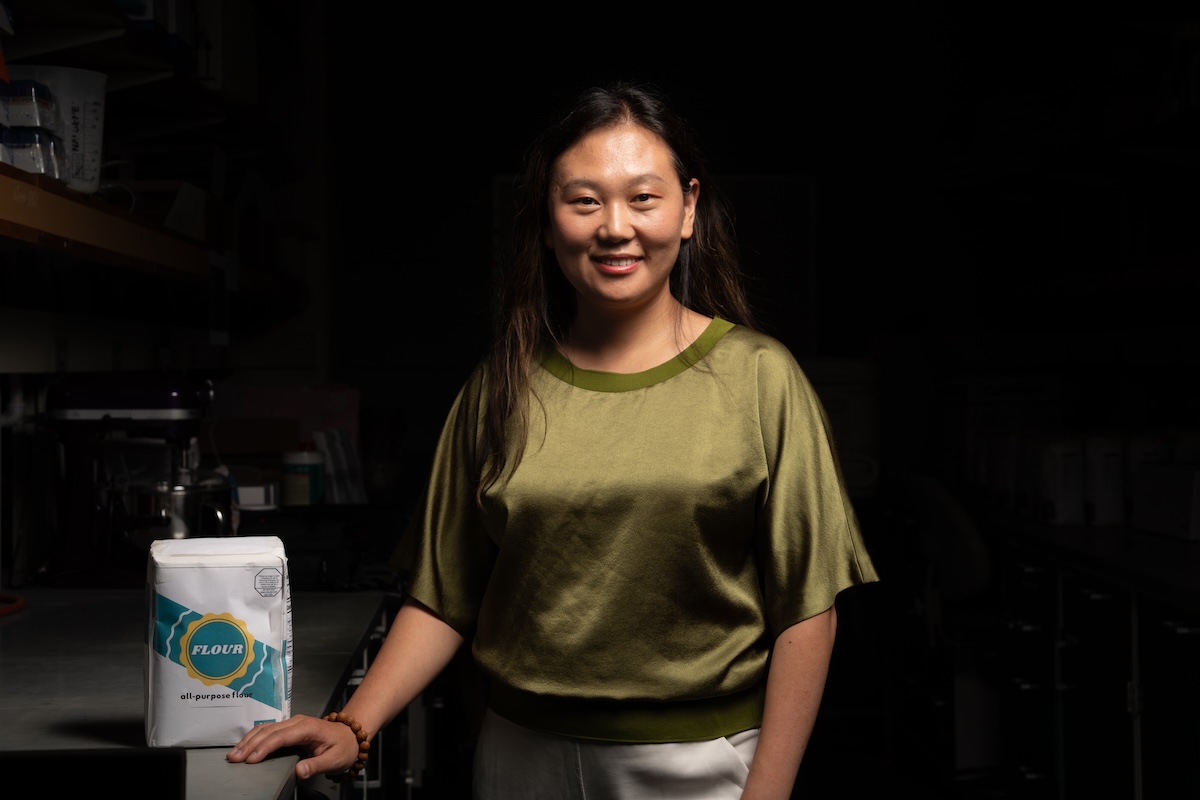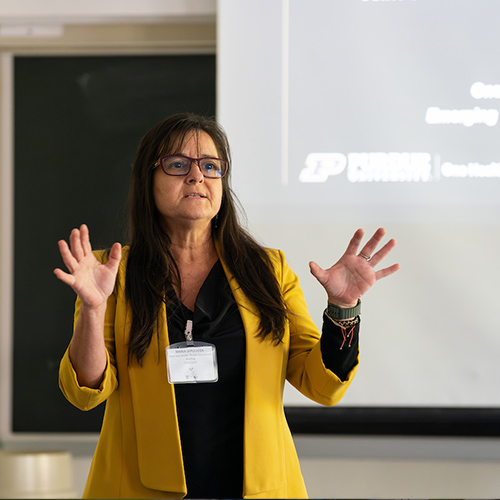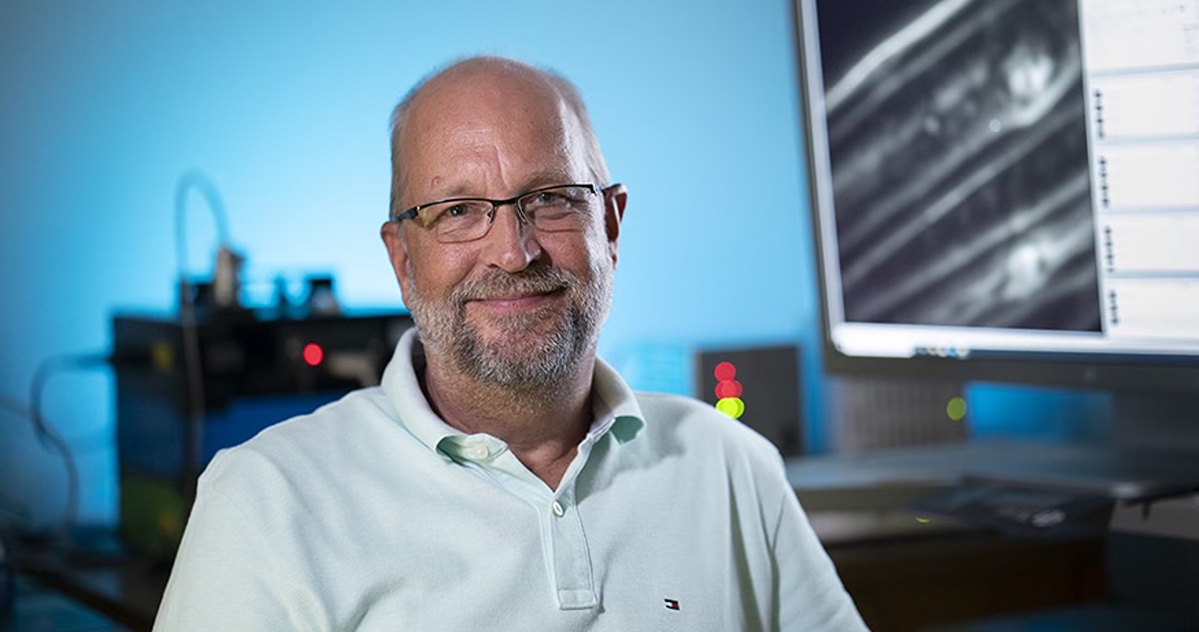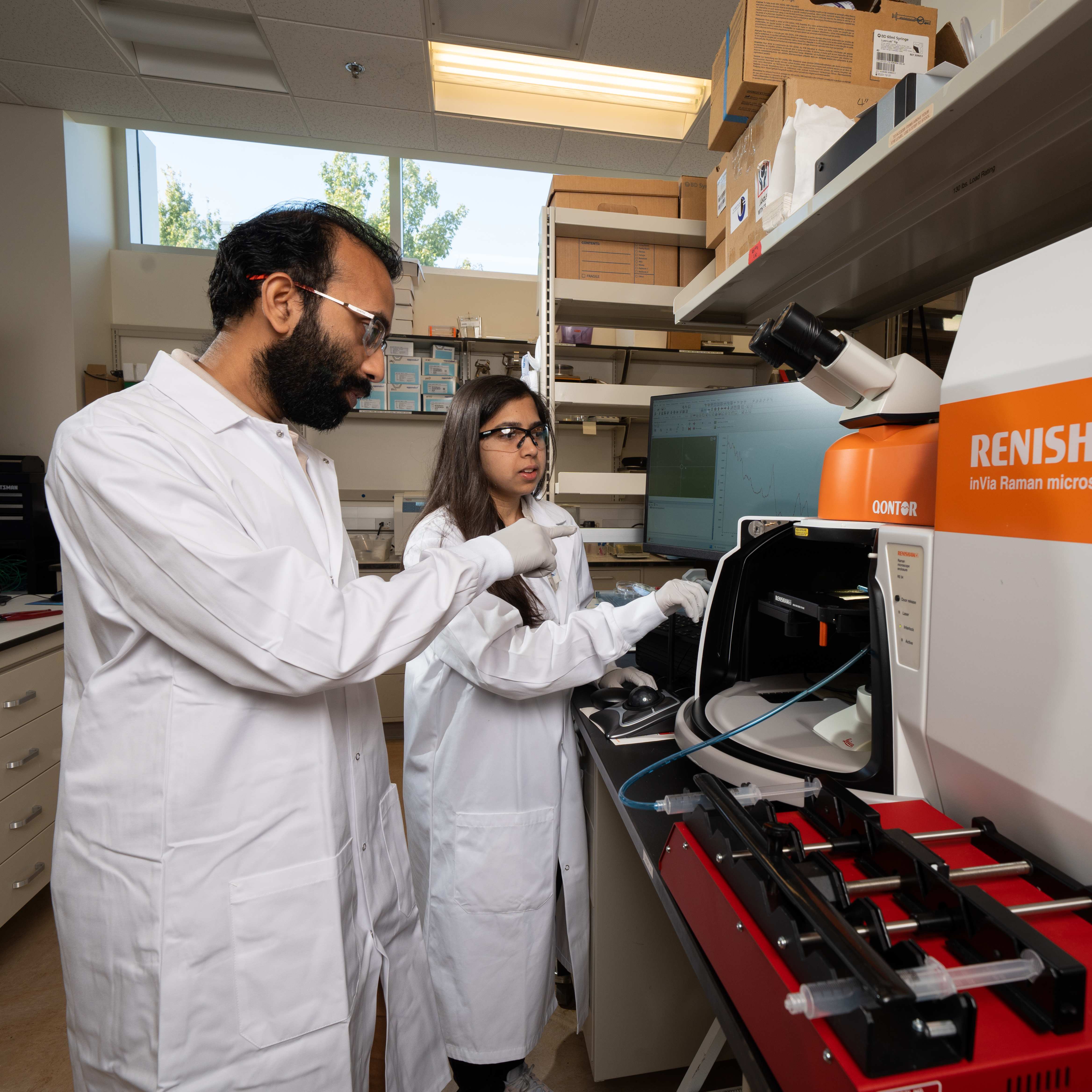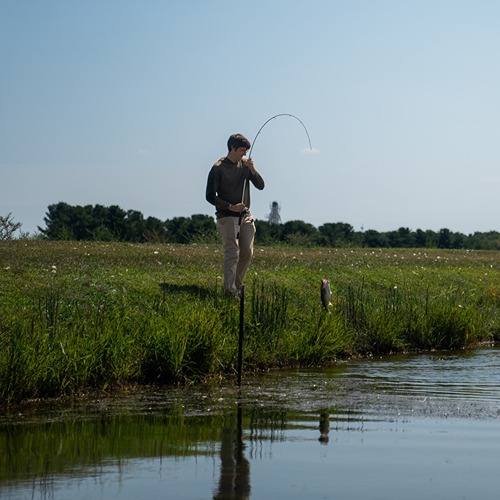Researchers explore connections between human and animal health
ONE HEALTH | FOOD SAFETY
Steve Lindemann, associate professor of food science and head of the Diet-Microbiome Interactions Laboratory, studies human health and disease – his work involves dietary fiber and the gut microbiome. But he’s also interested in how these same principles could benefit animals – and, therefore, humans as well. This intersection of human and animal health is foundational to the One Health Initiative.
Lindemann is working along with an Indiana biotechnology startup, BiomEdit, on studying fiber in animal feed. If they could figure out which fibers have the best fermentability in cattle guts, it could potentially make cows healthier and reduce methane emissions – i.e., cow burps. Fewer methane emissions equal fewer greenhouse gases. One approach may be to inoculate a cow’s rumen with a probiotic cocktail of bacteria that makes acids the cow can consume rather than methane, which is lost to the atmosphere.
Another project, in collaboration with Timothy Johnson, associate professor of animal sciences, involves using wheat bran to colonize piglets’ guts with bacteria from healthy, mature pigs before weaning. This could reduce weaning and transport stress, a major cause of swine illness, antibiotic use, and death.
“Solving that problem with a dietary solution would be potentially great for animal welfare and economically beneficial,” Lindemann says.
Purdue makes it easy to collaborate between departments, he says.
“It really is quite frictionless to have people from different departments work together,” he says. “We don’t have any barriers to collaborations; other institutions don’t always have that benefit.”
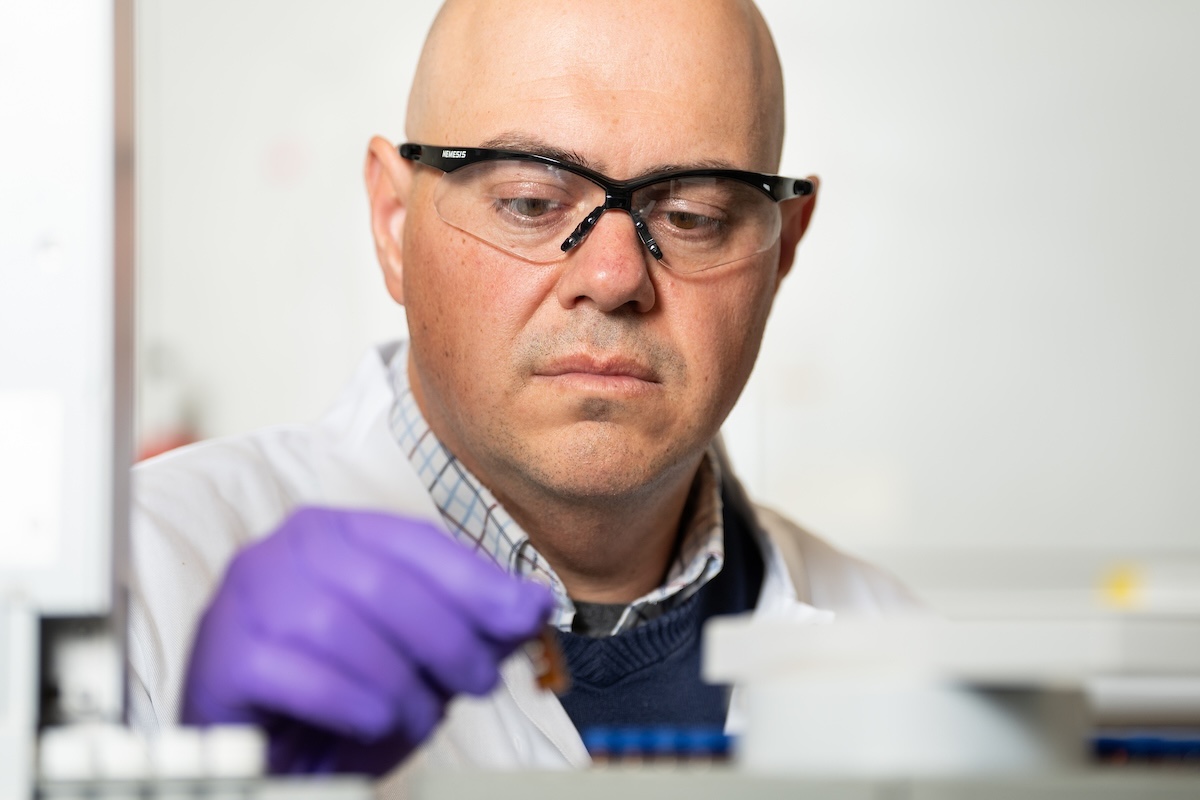 Steve Lindemann, the Philip E. Nelson Endowed Chair in Food Science
Steve Lindemann, the Philip E. Nelson Endowed Chair in Food Science 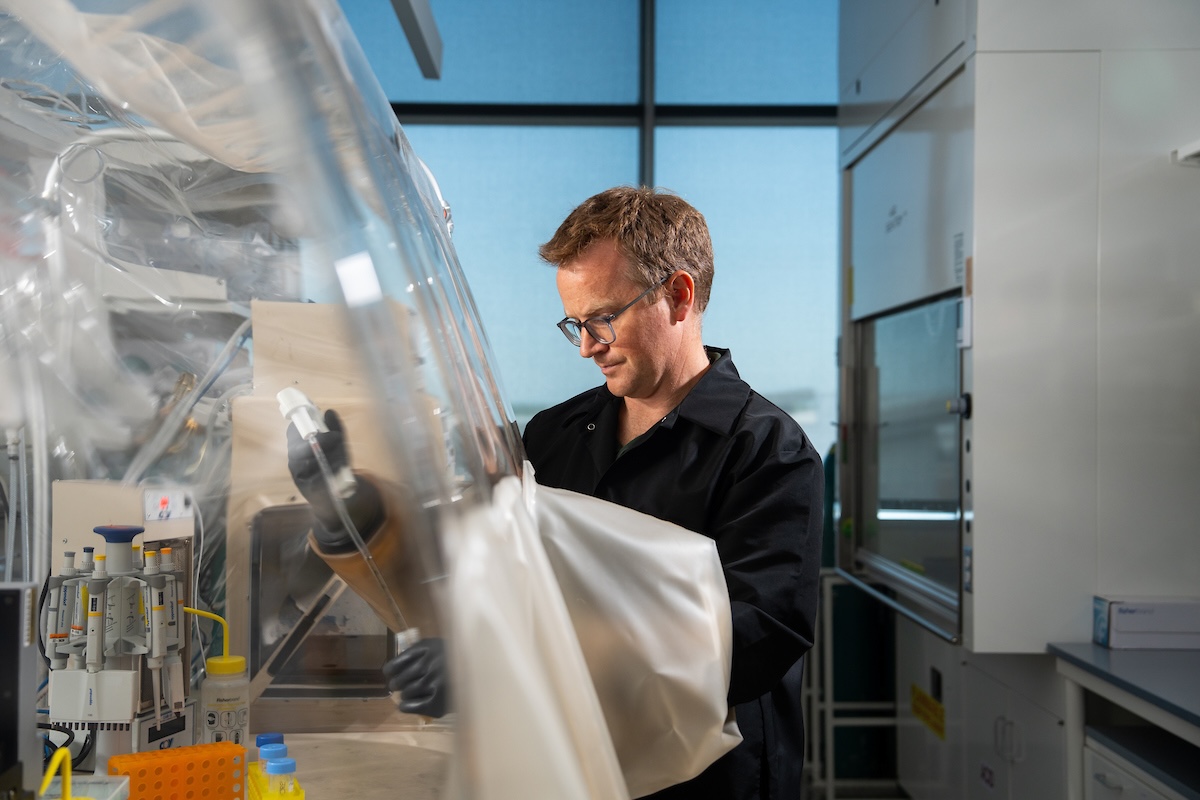 Timothy Johnson, associate professor of animal sciences
Timothy Johnson, associate professor of animal sciences “IF IT’S NOT SAFE TO EAT, IT’S POINTLESS”
Food safety experts in the College of Agriculture work to improve human health from a different angle: looking at how pathogens get in our food supply and how to keep them out.
Amanda Deering, associate professor of produce food safety, studies how fresh fruits and vegetables can become contaminated with bacteria that can make people sick. Last year, she began an FDA-funded project looking at salmonella in the environment. She and her team collect soil, water and air samples from sites throughout the state.
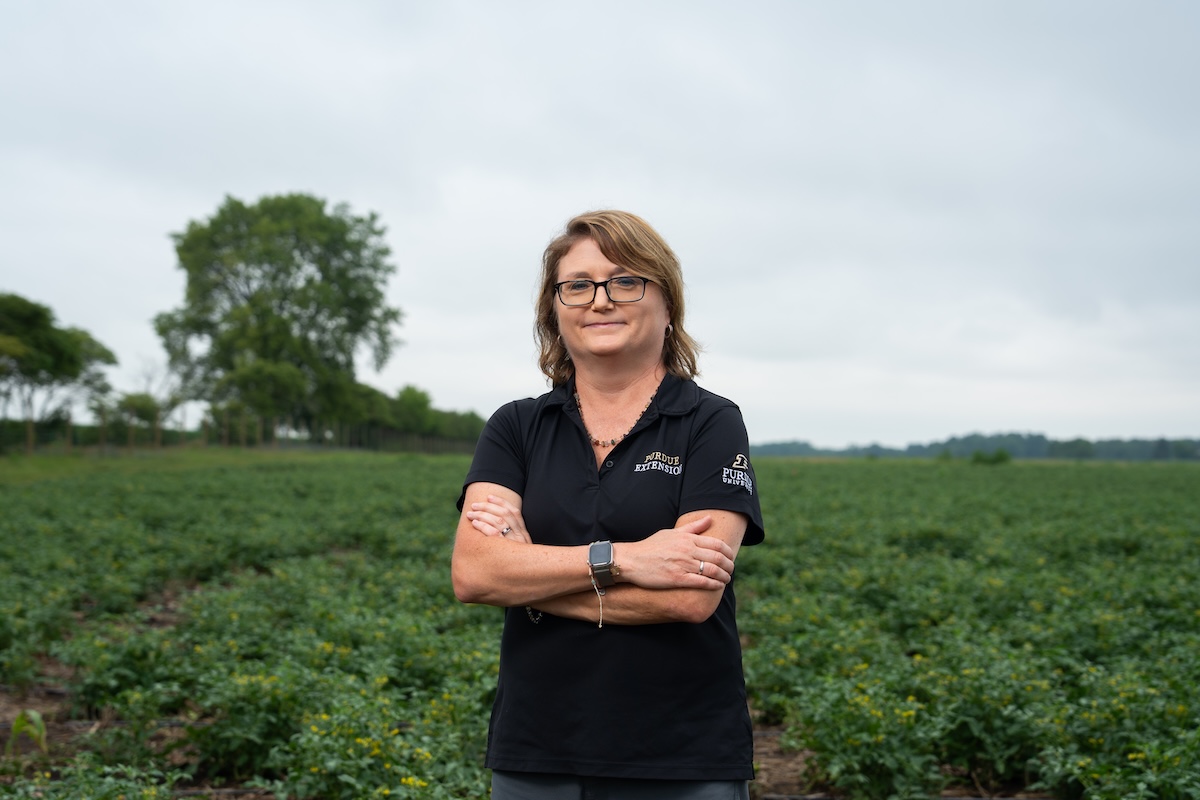
“We’re trying to understand how these bacteria are moving around in the environment,” she says. “Hopefully it will give growers more knowledge, so they have an understanding of where this stuff is coming from.”
Food safety is one of the basic foundations of health, Deering says. “We can grow as much food as we need, but if it’s not safe to eat it’s pointless.”
Deering’s colleague Betty Feng looks at an equally important angle of food safety: the human factors.
“I try to understand everyone in the food system – how they handle food, how they grow food, how they consume food, and I try to understand the food safety implications,” says Feng, an associate professor of food science.
One of Feng’s areas of research is low-moisture foods like flours and dried fruit and nuts, which have traditionally been considered low-risk. But outbreaks of E. coli and salmonella in wheat flour in recent years have made it clear that risks are indeed present and require improved management. Feng and her team surveyed consumers to better understand how they interact with flour, learning that many consumers eat raw cookie dough or cake batter. They then studied the warning labels on flour packaging, using eye-tracking software to see whether consumers were easily locating the warnings. Feng hopes to use this research to help flour manufacturers create best practices for warning labels.
“With the One Health Initiative, my goal is to foster collaborations across stakeholders and advance solutions to reduce foodborne illnesses and protect public health,” she says.
On the manufacturing end of food safety is Dharmendra Mishra, associate professor of food science. In April 2022, he and his team launched the Food Entrepreneurship and Manufacturing Institute (FEMI), which offers support for farmers and food entrepreneurs with ideas for new, value-added food products. FEMI helps with everything from support in development of recipes and creation of business plans to identifying safe manufacturing practices. One client is Egglife Foods, an Indiana-based rapidly growing food company that produces high-protein, low-carb wraps made from egg whites. FEMI helped the company ensure appropriate and effective formulation needed for manufacturing and production, Mishra says, and assisted in shelf life and storage needs.
“We are trying to help as many people as we can,” Mishra says.
Mishra’s work often takes place in Purdue’s pilot plant, a 9,000 square foot model manufacturing facility with equipment for aseptic processing, retort processing, extrusion for low and high-moisture products, fermentation, and much more.
“We do lots of industry trials there, and it helps to train the students as well,” he says. “It’s really great.” To illustrate, he holds up a bottle of gold-colored hot sauce, created by students in a food manufacturing class.
“Purdue has been incredible,” Mishra says. “Our food science program has a very rich history, and the resources available have allowed me to create this vibrant program.”
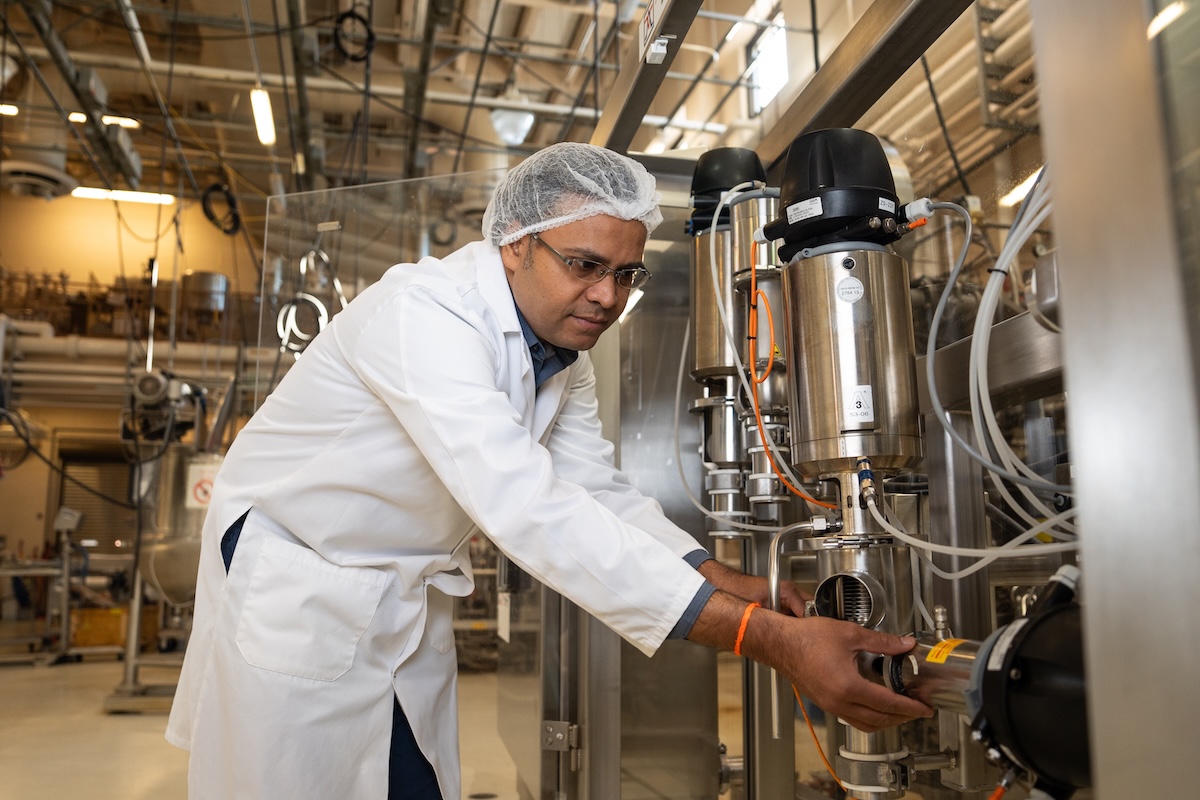 Dharmendra Mishra, director of Purdue University’s Institute for Food Product Innovation and Commercialization, adjusts equipment in Purdue’s Pilot Plant.
Dharmendra Mishra, director of Purdue University’s Institute for Food Product Innovation and Commercialization, adjusts equipment in Purdue’s Pilot Plant. Many Other Areas of Food for Health Research
Department head Senay Simsek says there are many other promising areas of research in food science, including phenolic compounds (bioactive molecules in plants that have antioxidant effects), obesity and anti-aging, climate change and food security, and personalized nutrition. The research topics are almost infinite, which makes sense for a subject that’s so critical to our physical, psychological, social, cultural and environmental health.
This research is a part of Purdue’s presidential One Health initiative, which involves research at the intersection of human, animal and plant health and well-being.

